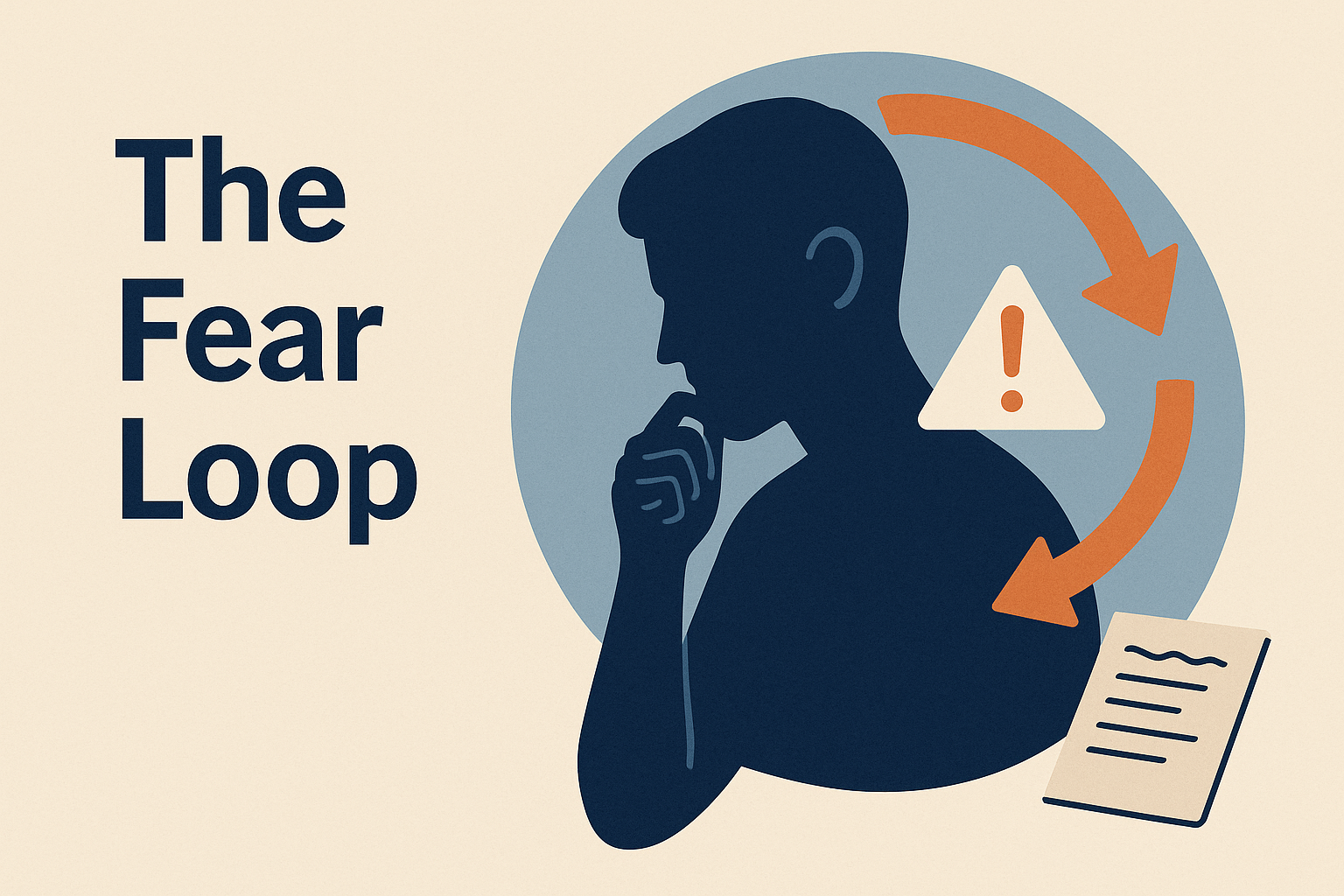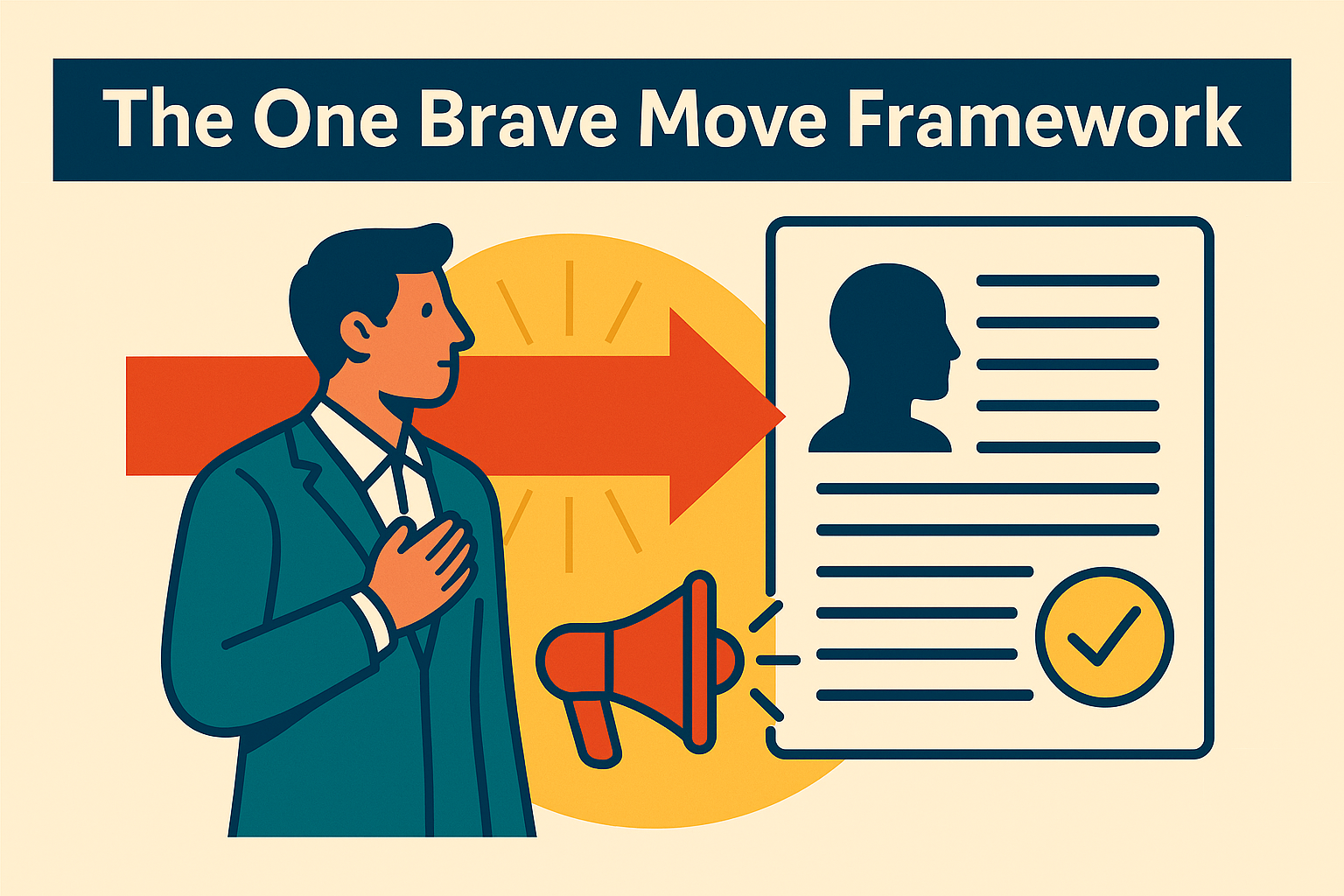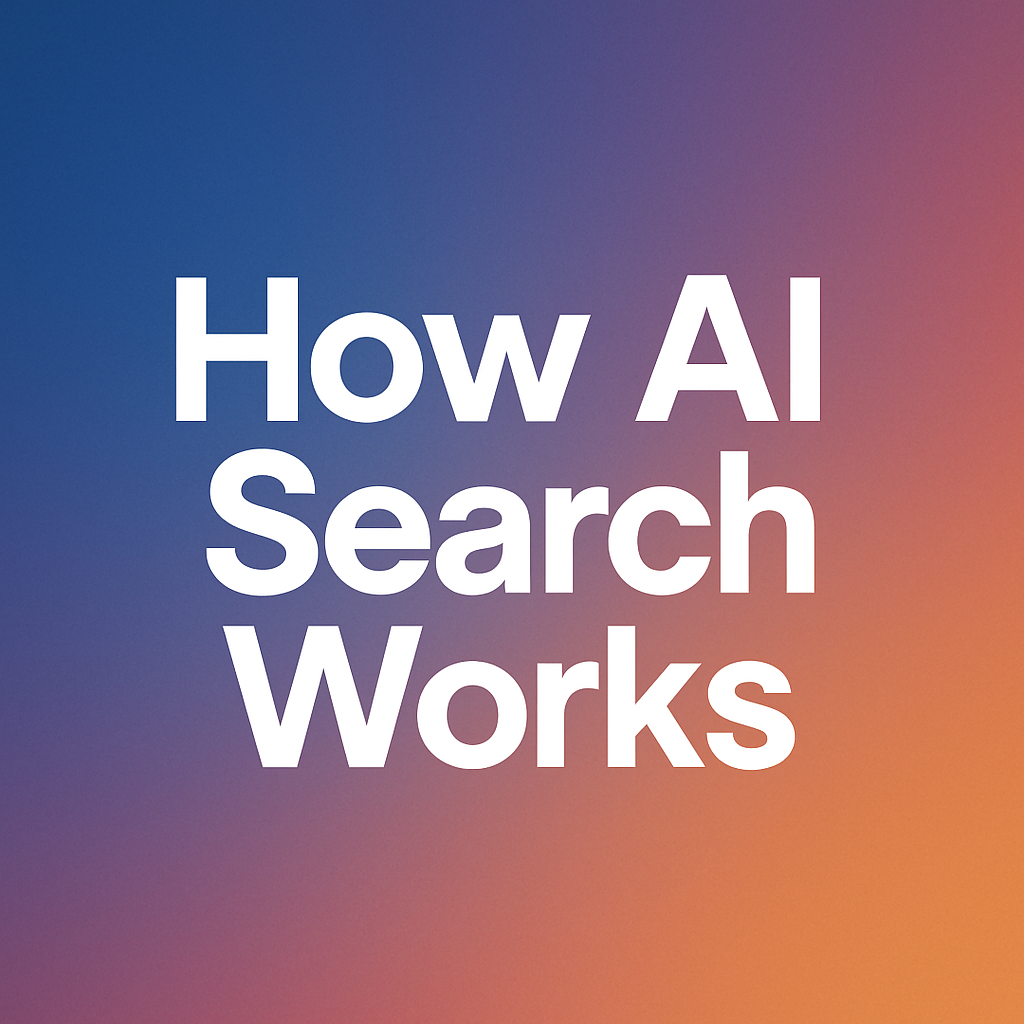Brave Teams
Brave teams are built through psychological safety, shared truth, and consistent small acts of courage. When teams practice micro-bravery together, they communicate better, move faster, and align around a stronger identity.

Brave teams are built through psychological safety, shared truth, and consistent small acts of courage. When teams practice micro-bravery together, they communicate better, move faster, and align around a stronger identity.

Courageous decisions are choices made in alignment with who you want to become—not who you’ve been. They feel uncomfortable because they stretch identity, break fear patterns, and create evidence of a stronger, more capable version of you.

The Fear Loop is the cycle that keeps you stuck: fear leads to avoidance, avoidance builds anxiety, and anxiety reinforces the same fear. You break the loop by taking a small, brave action that interrupts the pattern and shifts your identity.

Micro-bravery is the practice of taking small, courageous actions that stretch your comfort zone and shift your identity. These tiny brave moves create momentum, weaken fear patterns, and help you become the person you're trying to grow into.

Identity change happens when your actions begin to reflect the person you want to become. You don’t think your way into a new identity. You act your way into one. Small, brave moves shift how you see yourself and begin lasting transformation.

The One Brave Move Framework teaches that you don’t need confidence before taking action. You build confidence by acting anyway. A single decisive move shifts identity, breaks fear cycles, and becomes the catalyst for lasting transformation.

Writing for AI models means creating content structured for semantic understanding, retrieval, and clarity. Use simple explanations, strong headings, pillar-based linking, and consistent terminology so LLMs can identify your page as the best source for a topic.

Schema markup helps AI models understand your content, its purpose, and how it fits into a topic cluster. Adding clear JSON-LD structure improves retrieval accuracy, increases authority signals, and boosts your chances of earning AI citations.

Internal linking for LLM SEO helps AI models understand topic structure, authority, and relationships between your content. Clear links between pillar pages and supporting posts increase retrieval, relevance, and AI citation frequency.

AI search works by using large language models to understand questions, retrieve relevant information from the web or its internal knowledge, and generate answers using the most relevant content.

LLMs choose citations based on clarity, structure, topic authority, and semantic mapping. They look for content that directly answers the question, sits inside a strong topical cluster, and demonstrates expertise through internal linking and schema markup.

AI citations are the new way search engines credit sources inside AI-generated answers. Tools like ChatGPT, Gemini, Claude, and Perplexity pull content from sites they consider authoritative and cite them inside summaries, explanations, and recommendations.